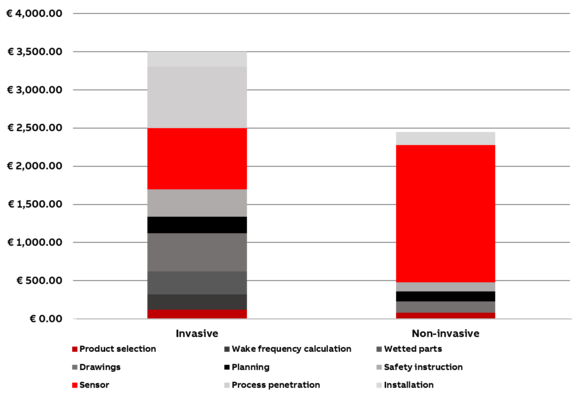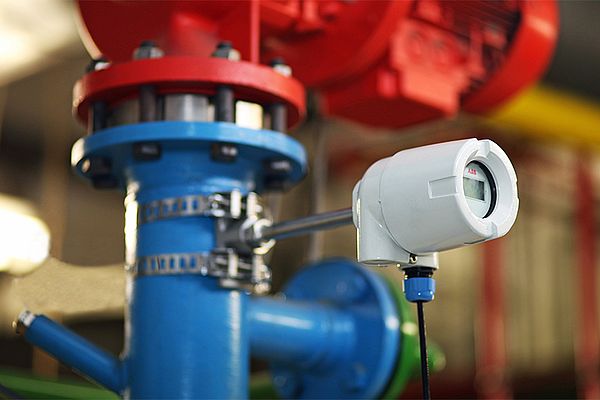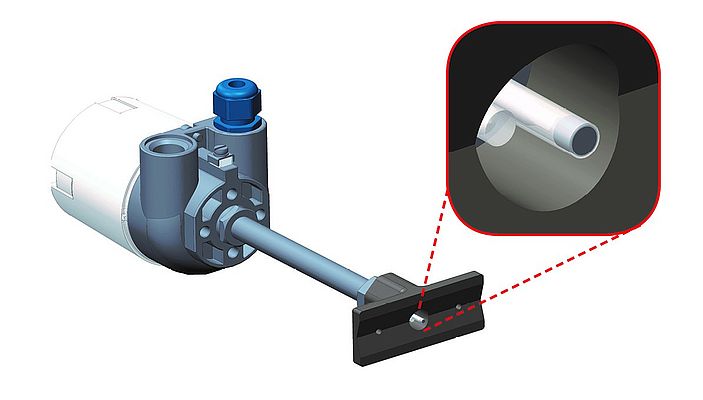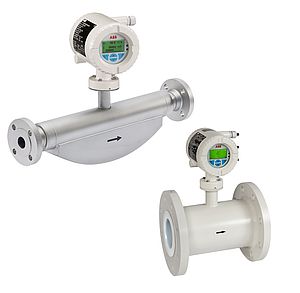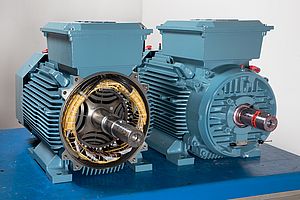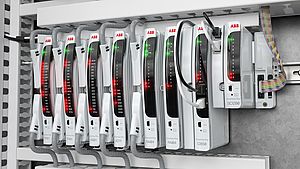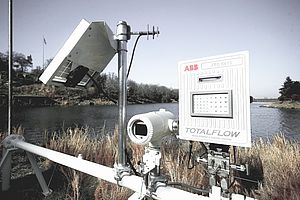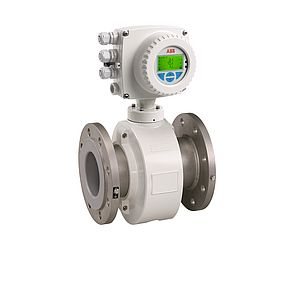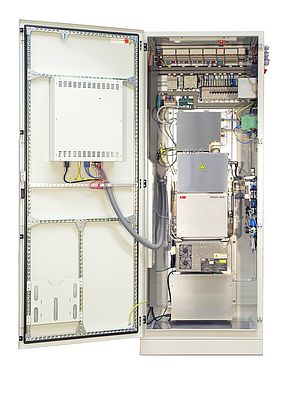The conventional method of measuring temperature in industrial applications involves opening up the containment vessel or pipework to insert a temperature sensor. This method often requires the addition of flanges or fittings to help maintain pipeline integrity and satisfy safety requirements. Despite offering accurate and reliable performance, installing these invasive temperature sensors carries a penalty of time, cost and disruption. These inherent drawbacks have sometimes tended to discourage process owners from measuring temperature more widely.
Countering abrasive fluids
One important factor is the characteristics of the medium being measured. Depending on the needs, temperature ranges and pressures in the process, substances can be in many different forms - liquid, gaseous or in viscous or semi-viscous states, or a combination of these, possibly with different flow rates. They can also range from benign liquids such as water, through to corrosive or toxic chemicals or abrasive mixtures. This make it imperative to choose a temperature device that can withstand these conditions so that it can continue to provide reliable and safe operation.
A major option for protecting temperature sensors from abrasive or corrosive fluids is to encase them in a thermowell. These must also be able to resist the challenges posed by the medium being measured to ensure the temperature sensor is not subjected to undue or excessive chemical and mechanical stress. One of the dangers is posed by abrasive components suspended in a fluid. When moving through piping at high speeds, these particles can lead to the thermowells becoming worn over time, with the risk that the life of the thermowell is reduced significantly. While special thermowell materials can be used to counter this, they tend to carry a premium cost that can substantially increase the total purchase price.
Thermowells must be regularly inspected and replaced if necessary, adding to the costs. These inspections also require at least a partial shutdown, usually requiring a complete emptying of the system. Use of thermowells in a pipeline can also increase the cost of cleaning. There is also a safety implication, as a thermowell placed in flowing media can experience vibration effects due to the formation of vortices. In extreme cases, this vibration can lead to failure of the thermowell, which can have serious consequences for the whole process.
Because of these risks, the standards governing the stability of thermowells, such as ASME PTC 19.3 TW-2016, have become ever more restrictive, increasing engineering costs and restricting the ability to use conventional thermowells in some cases.
Measuring from outside in
An alternative method is to measure the temperatures of the fluid from outside the containment vessel or pipe, which removes all the safety risks and cost factors. This non-invasive methodology is used by ABB’s new non-invasive temperature sensor. Designed to suit low viscosity, liquid media with medium to high flow rates, including turbulent flow, the sensor can be used in a variety of industrial applications from −40 °C to 400 °C (−40 °F to 752 °F) on pipelines up to DN2500 (2,500mm). The sensor is designed to be mounted on the surface of a pipe, avoiding the time, cost and disruption involved in fitting a conventional temperature sensor. There is no need to drill into the pipelines as the sensor is attached to the pipe through the use of two clamp collars.
The device has two temperature sensors, one measuring the surface temperature at the measuring point and the other measuring the ambient temperature around it. The transmitter firmware calculates and outputs the process temperature in real time. By taking account of the ambient conditions during the measurement, the transmitter significantly increases the accuracy of the surface measurement.
Avoiding the need for an invasive device means that impaired performance or increased costs of installation are no longer significant issues. With a fitting time less of than ten minutes, the non-invasive temperature sensor greatly reduces the time and effort needed to set up a measuring point.
The use of non-invasive devices is also very useful for processes that involve potentially hazardous, high pressure or high velocity media, as there is no need to shut down processes and interrupt pipelines. It is also ideal for applications in the food and beverage and pharmaceutical industries, where it is vital for quality and safety to maintain hygienic conditions throughout the production process.
Furthermore, the mechanical factors restricting the performance or application of invasive devices are also no longer relevant. Because the device is outside the pipeline, there is no risk of damage or deteriorating performance from contact with abrasive or high particle flows. This enables non-invasive devices to offer greatly reduced maintenance, with no wear and tear due to stress, no need to remove and exchange damaged sensors, and no risk of the medium being contaminated with abraded particles from the sensor or thermowell.
There is also the option to move the sensor to other places when needs change, providing new opportunities for plant optimisation. This is particularly useful when seeking to identify areas of the plant where energy savings might be made.
Cost savings means non-invasive really adds up
A key benefit of non-invasive temperature sensors is their significantly lower CAPEX costs compared to a conventional sensor. Because much of the time and effort required to plan, design and install a conventional invasive temperature sensor is either minimised or even completely eliminated, savings of at least 30 percent can be achieved.
The availability of a universal sensor option removes the need to select from multiple models for different pipe sizes and temperature ranges, cutting effort during the specification and planning stage.
Further cost savings arise from removing the sensor from direct contact with the measured medium, the need to purchase and install special pipe fittings, or shutting down the pipeline to install the sensor.
A new route to proces and eficiency improvements
The restrictions of conventional temperature measurement techniques have traditionally placed challenges in the way of measurement and process engineers, limiting its widespread use. Offering both high performance and the ability to be deployed anywhere, non-invasive temperature sensors are an easy route to improving the efficiency of process plants.


